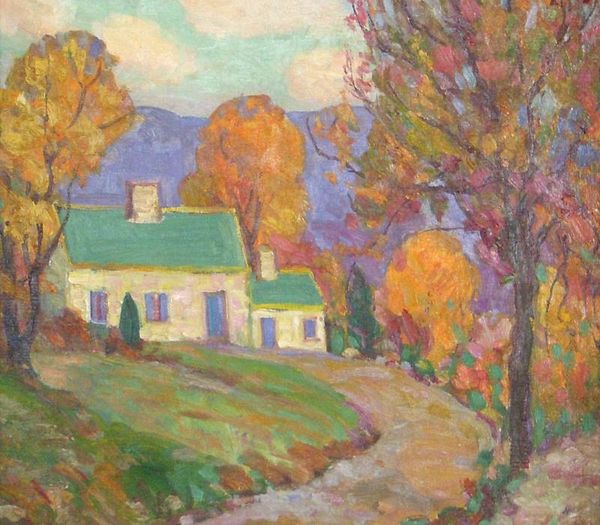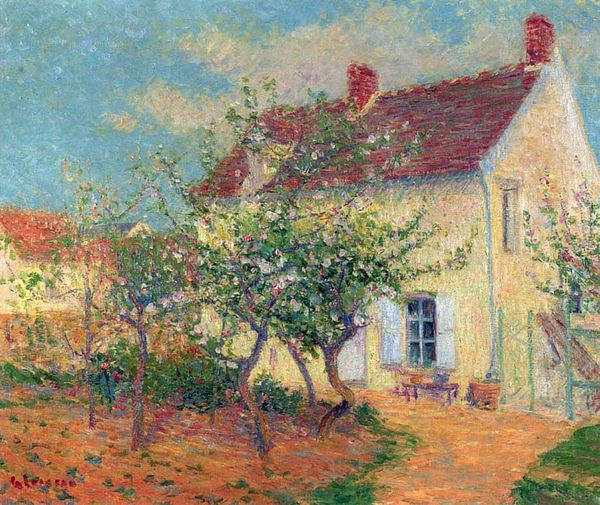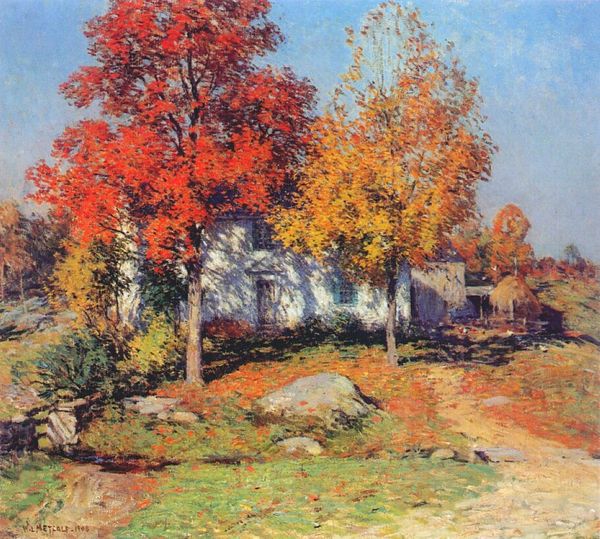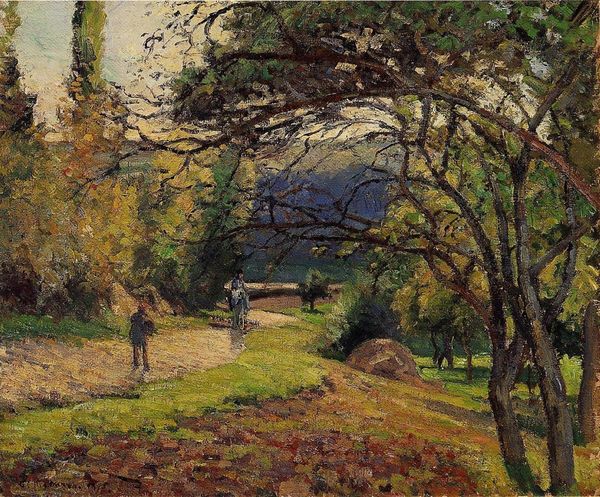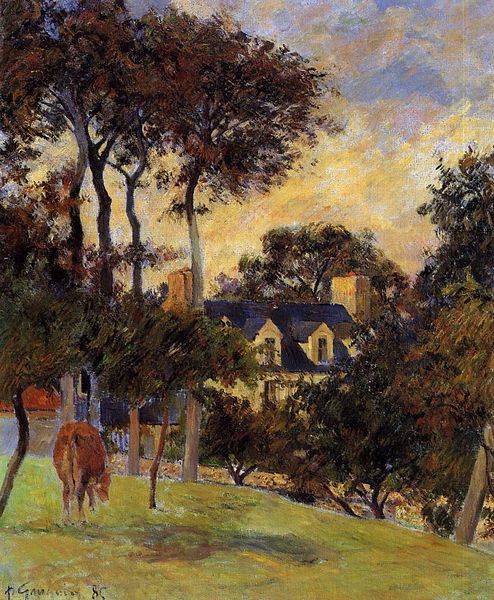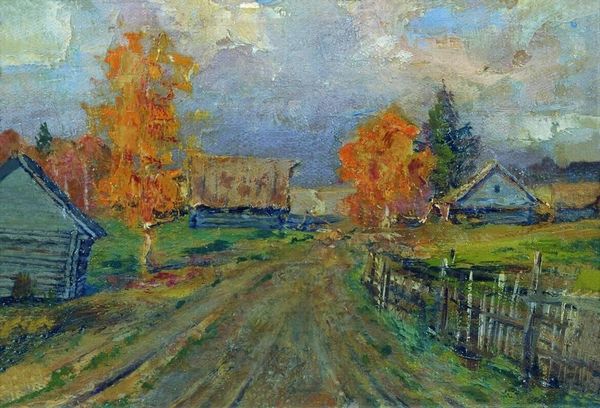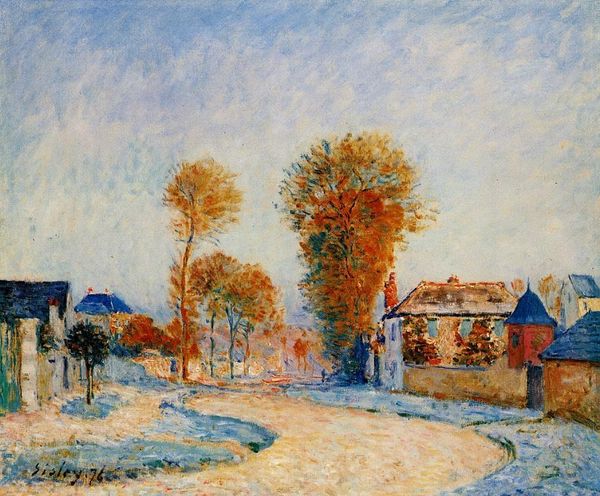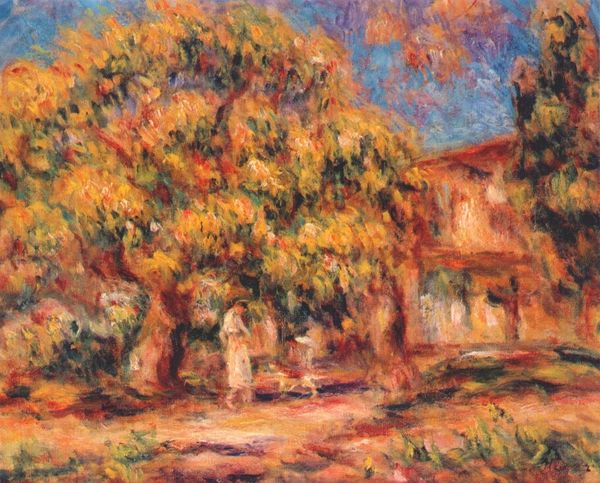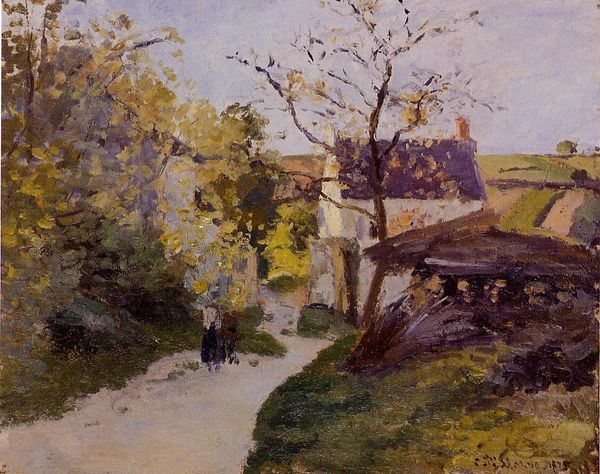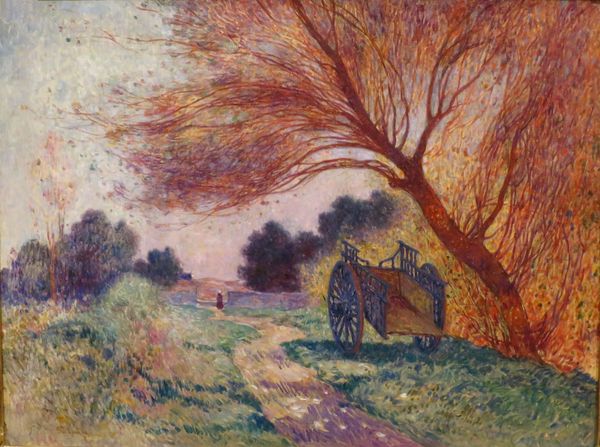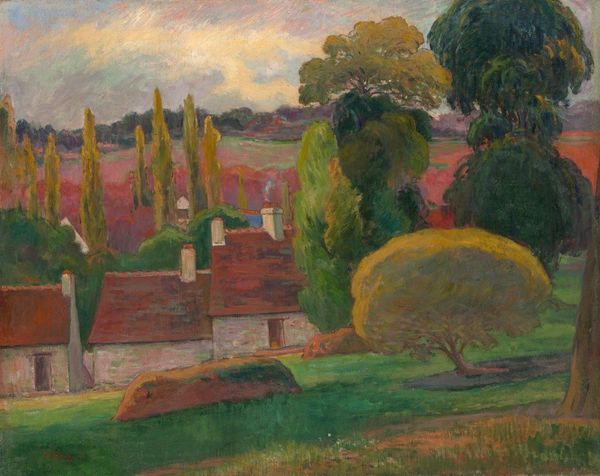
plein-air, oil-paint
#
plein-air
#
oil-paint
#
landscape
#
oil painting
#
post-impressionism
Dimensions: 72.5 x 91.5 cm
Copyright: Public domain
Curator: Gauguin’s “Lane at Alchamps, Arles,” painted in 1888, currently resides in the Sompo Japan Nipponkoa Museum of Art. It’s rendered in oil on canvas. What’s your initial impression? Editor: A fiery, autumnal path that almost feels like it’s vibrating. The oranges and reds are so intense; it's as though the leaves are burning right before our eyes, calling forth memories and images of struggle, especially concerning the social injustices present during Gauguin's life. Curator: The choice of complementary colors is certainly striking, enhancing the mood, especially during that time! Gauguin was, of course, working alongside Van Gogh in Arles during this period, wasn’t he? It makes one wonder about their exchanges, what was going through their artistic approaches, and to see art with new eyes in light of the societal upheavals of that period. Editor: Exactly! Seeing this landscape painted *en plein air* provides insights into how artists of the period rebelled against academic tradition by taking art outside. It really opens discussions about the meaning of landscape and its use for cultural expressions regarding human and civil rights. Curator: Indeed, we see a direct reflection of their experiences within the socio-political moment that Gauguin’s style evolved, capturing not only the landscape, but also his vision within the modern movement of the period. This helps one delve into that turbulent exchange and appreciate the work's broader implications and his evolving symbolism. Editor: The landscape tradition intersects beautifully with post-impressionist techniques here to raise powerful questions: What does this lane symbolize in a historical context? Is it an escape route, or a road leading to confrontation? The vivid colors almost force viewers to consider how art interprets reality or guides it to inspire actions of solidarity, social justice, and historical change. Curator: In conclusion, viewing “Lane at Alchamps, Arles" is like diving into the complex artistic world. It's fascinating to realize how deeply his personal artistic expression blends with a larger movement to mirror and analyze society’s intricacies. Editor: Absolutely, it allows us to analyze the artistic responses, giving depth to how post-impressionist art acts as a social dialogue platform, echoing the political feelings present at that moment, inspiring critical thoughts on civilization.
Comments
No comments
Be the first to comment and join the conversation on the ultimate creative platform.
